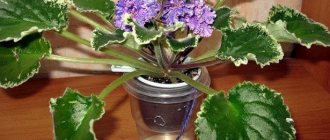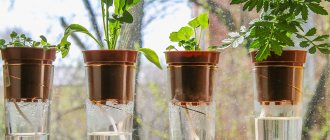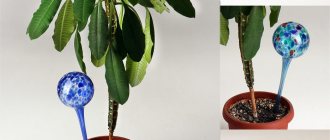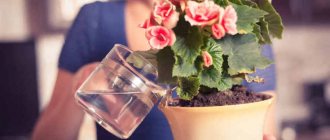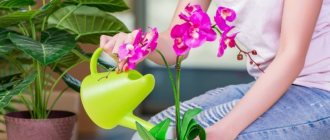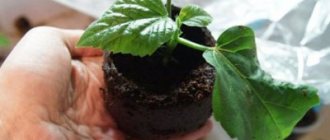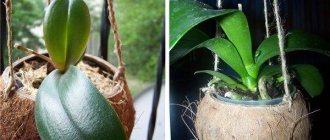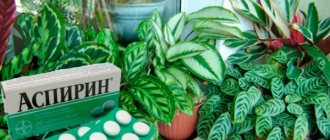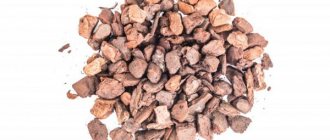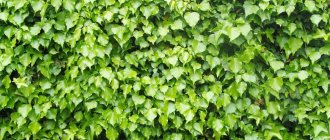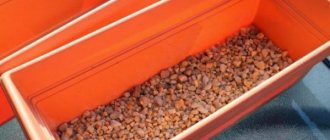By installing drip irrigation in a greenhouse, in an open area or even at home, you no longer have to water the plants manually. Therefore, any gardener and florist would not mind acquiring one. You can do drip irrigation for a greenhouse yourself; in this article we will tell you and show you how. And in the end, we will analyze the options for ready-made systems that operate from a water supply or container.
DIY drip irrigation system assembly
Homemade drip irrigation is not difficult to make.
You must perform the following steps step by step:
- The barrel (up to 200 l) is raised above the ground to a height of up to 2 m. Holes are made in the lid for air access. If it is missing, then cover it with gauze - this is protection from insects and dirt.
- A hole is drilled near the bottom, a tap-tip is installed and the hose is brought in.
- The mains are installed at a slight slope - about 5 cm for every meter. For this, additional pegs are used.
- Pipes (hoses) are not made long - it is better to build several systems. Lay out carefully, do not drag or pull.
- They ensure precise joining of pipes - they are placed in a vice before cutting. Sealed with tow or fum tape. All connecting elements fit very tightly.
- The holes are made small (no more than 2 mm). An awl or nail is suitable for a hose, and a drill for PVC pipes. If you insert pieces of wire, water will flow down them.
- Purchased devices have colored marks - they are placed upward.
- The main hose is secured with a clamp. The lines are washed to prevent blockages, and a plug - a wooden plug - is inserted.
- They check that the water reaches each dropper, and the soil is moistened evenly.
Calculation of watering time and volume of liquid supplied
The system design allows you to calculate water consumption and tank volume. Calculation example:
- highways - 15 m;
- between nozzles - 20 cm;
- required number of droppers - 1500/20=75 pcs.;
- consumption of one - 2 liters per hour;
- all nozzles - 2*75=150 l;
- barrel size - 150.
A long system will require a larger capacity, so several devices are usually made.
Individual watering times are calculated for each plant. Devices that consume 2 liters per hour include:
- cucumbers - for 60 minutes;
- tomatoes - 45 minutes;
- cabbage - 75 min.
What is the maximum amount of water?
When using bottles with a volume of 500 ml to 1 liter, the water lasts for an average of 5 days. It’s just not wise to use such small containers, since they need frequent “refueling”.
It is recommended to stick to a 1.5-2 liter container, which will allow you to visit the dacha maximum once a week . This volume of water is enough for 6-10 days.
And by installing a five-liter tank, you can forget about watering for 10 to 17 days. But, it should be noted that a large capacity requires a lot of space.
DIY drip irrigation from plastic bottles
For a small area, the simplest system of ordinary plastic bottles is suitable.
They are hung on a peg, with the neck down, and a narrow tube or simply the refill of a ballpoint pen is inserted into it. Be sure to make a hole for air to escape.
The second option is to make holes in the bottom. Here it is important to take into account the type of soil and its ability to absorb moisture, since the number of holes depends on this:
- sandy - 8;
- clay -12.
Their size is small so that the liquid does not spill out quickly. You can make them with a needle.
A simple option is underground watering: the bottle is buried in the ground, and the neck remains above the surface. When the amount of water decreases, add it. The advantage of this method is that there is no crust on the surface that needs to be loosened. For example, in a greenhouse, one tomato bush will need 1 liter of liquid for 7 days.
The holes quickly become clogged if there is clay in the soil. To prevent this:
- put ordinary nylon tights on the part of the container with holes;
- make a little drainage - put burlap or grass in the hole before burying.
This is a good idea for people who are often away. The bottle is placed in the ground, tilted at 30-45° to reduce the water pressure and the rate of its consumption.
We start to drip
Let's start with point drip irrigation systems from dosing containers without water supply networks, as the simplest and cheapest. On large areas they are unacceptably labor-intensive, but on a plot of up to 2-4 acres this has little effect. And don’t think that you’ll have to resort to something high-tech: spot irrigation of small areas of open ground at home is nothing more than drip irrigation from plastic bottles. It can be produced in 3 ways: micro-sprinkling, surface and deep, see fig. Dispensers can also be canisters and pipes. But the former are not wasteful and expensive material, and the capacity of the latter, at optimal depth, is insufficient for the watering rate of most plants.
Methods for arranging drip irrigation from plastic bottles and other containers
Micro-sprinkling prevents clogging of the dispenser nozzles with soil, but requires stands for suspension, makes it difficult to fill dangling dispensers and does not allow water to be supplied exactly to the roots. Surface watering requires refining the bottles, which, given the required quantity of tens and possibly hundreds, is very labor-intensive. In deep spot watering from bottles, radical changes have recently occurred that have made it highly effective, see below.
Simple drip irrigation from bottles
The simplest surface drip irrigation can be organized using plastic containers or 1.5 liter bottles installed in rows between bushes, see fig. The dies in them are made at a height of 3-5 cm from the bottom so that sediment in the water does not clog them. Such irrigation is suitable for moisture- and light-loving crops with fruits located quite high above the ground, for example. tomatoes, eggplants. A serious drawback of this “system” is that mulching of the rows is required; why - see above.
Much better results are obtained by deep watering from inverted and cut bottles, left and center on the trail. rice. Mulch is no longer needed, filling dispensers is more convenient, and evaporation from them creates some kind of microclimate for the plants. However, a small, real revolution in bottle-drip irrigation was made by the appearance on sale of nozzles in threads for bottle necks with ready-made dies, on the right in Fig. They were first invented by indoor gardeners; tips of pastry syringes were used. In addition to other advantages of deep watering, you can stick dispensers into the ground obliquely, delivering water directly to the roots.
Deep drip irrigation from bottles
Other options
In addition to bottles, they sometimes try to use medical droppers for targeted individual drip irrigation, see next. rice. However, the consistently positive long-term results of such experiments are unknown. reasons due to the fact that medical droppers are disposable equipment:
- The thinnest filter gets clogged very quickly.
- Remove the filter - the needle becomes clogged with soil a little slower.
- The flow regulator clips quickly burst, the wheel pins come out of the grooves and the adjustment stops altogether.
- Hoses also quickly become cloudy, become slimy inside, and swell; the lumen of the hose is reduced, and then the tubes generally creep apart.
In addition, honey an IV costs money, and not very little. And if the medical staff, contrary to the strictest prohibition, does not destroy them after use (droppers for medicines cannot be disinfected), then who knows what patients were given them. And wouldn’t any of them share their ailments with you through a dropper...
On fairly large areas, up to 6 acres or more, surface drip irrigation from relatively available materials can be arranged, as shown in the figure:
Simple drip irrigation from buckets and garden hoses
Irrigation lines (irrigation tapes) are made from a PVC garden hose with a caliber (clearance diameter) of 3-8 mm, it is relatively inexpensive. The dies in them are made as described above. The holes in the bottoms of the buckets are drilled along the outer diameter of the thread on the neck; Such a spout is tightened with a standard plug; perhaps with a thin rubber seal. The holes in the plugs for the hoses are 1-1.5 mm smaller than their outer diameter, then seals will not be needed here. For a weekend home, this is perhaps the optimal solution: the entire system can be easily deployed, and before leaving it can be rolled up and hidden.
Note: a similar type of system, but much less expensive in all respects, can be built for growing seedlings at home, see video below.
Video: drip irrigation for seedlings at home
Automation of drip irrigation
It is possible to automate a drip irrigation system so that it turns on itself on time without human intervention. To do this, use a special device - a controller (timer).
The controller, which has fittings on both sides, is inserted into the drip irrigation pipeline system. It can also be used to control water intake when connected to a pump.
It is possible to do underground irrigation - this drip irrigation is distinguished by the laying of a pipeline that is placed at depth.
DIY drip watering of indoor plants
When leaving for a long period, a drip irrigation system will be useful for house plants. You can choose it in the store. For example, there is a special polymer that retains liquid and then releases it.
But you can make drip irrigation for indoor plants with your own hands. A few simple ideas:
They take a plastic bottle and attach a dropper and silicone tubes. The end is closed, and holes are made along the entire length.
Wick watering - place a container of water near the pot. The wick is lowered into it with one end and buried in the ground with the other. Used for porous soil. Not suitable for tall plants because They have large roots and the moisture they receive will not be enough.
Be sure to check the operation of the system before leaving, the rate of water consumption.
Operating rules
Using pots with an automatic watering system will not cause difficulties even for inexperienced gardeners, but to obtain a large amount of green mass throughout the entire period of flower growth, you need to know and apply the advice of experienced gardeners:
- mandatory use of drainage materials at the bottom of the pot and special soil that matches the type of flower;
- using the usual method of watering during the formation of the root system, which should reach the bottom of the pot;
- the watering tank should be filled only with settled water at room temperature;
- the amount of water should reach the maximum mark on the indicator.
Popular articles Congratulations on May 9
The frequency of filling the container with water depends on the following factors:
- volume of container with water;
- type of plant;
- level of development of the root system;
- season;
- ambient temperature;
- level of light and humidity in the room.
Well-known manufacturers provide detailed information on operating the device and caring for plants in the instructions for their products.
Beginning gardeners should pay attention to those pots that are sold together with special drainage material, which makes it possible to ensure optimal water supply and quantity. A special drainage composition can be replaced with ordinary vermiculite, gravel and expanded clay
To carry out root feeding of a plant, it is enough to simply dissolve the necessary organic or mineral fertilizer in water, which is poured into a special tank.
Between each filling of the container, a certain amount of time must be allowed to dry the nutrient soil. This procedure will prevent rotting of the root system, and replacing the top fertile layer will avoid the development of fungal diseases.
The most popular pots are the well-known brands Xiaomi and Parrot Pot, whose products are of high quality and have a long service life.
Xiaomi flower containers and Parrot Pot have special sensors and electronic applications that monitor the condition of the flower and inform its owner about the need to water or feed the plant.
Innovative technologies and modern equipment allow manufacturers to produce products that greatly simplify human life. One of the latest innovations on the modern market is the “smart” flower pot, which is popular with both interior designers and ordinary indoor plant lovers. The use of this device will fill any interior with bright, lush and beautiful greenery of indoor plants and will make it possible to create unique compositions that can consist of several different types of flowers.
Watch the following video about smart pots.
Review of ready-made drip irrigation systems
Many gardeners prefer to make a drip irrigation system with their own hands, but, as a rule, it is good only for not too large plantings. It is much more reliable and convenient to purchase a ready-made drip irrigation system that will serve you for many years.
We offer an overview of the most popular systems to make it easier for you to decide on the model and configuration.
"Bug"
The system got its name by analogy with a beetle - a long hose-body and many dropper legs arranged symmetrically. The manufacturer offers two types of systems, separately designed for greenhouses and greenhouses.
You will have to assemble the structure yourself; to do this, use an awl to make holes in the main hose where the droppers are inserted. True, doing this without additional lubrication is quite problematic.
Each kit comes with a special filter that prevents soil and sand from clogging the irrigation holes, but the timer is purchased separately; on the official website of the store it costs 2,186 rubles. with discount.
“Beetle” is produced both with water intake from stationary containers and from a water supply system. The system works well even at low pressure. The container irrigation kit includes a transparent tube through which you can monitor the water level in the barrel.
The manufacturer gives a choice of systems for 20, 30 and 60 plants, but, as practice shows, even the “Beetle” 30 is too small even for a classic greenhouse, while we will not consider 20 at all, although its price on the official website is only 623 rubles.
Many summer residents note that the quality of the plastic leaves much to be desired, the joints leak, and the timer has to be hidden in polyethylene to prevent water from getting inside it. The kit also includes plugs that allow you to adjust the direction of water movement and carry out selective watering, as well as a fitting that makes it possible to connect the system to almost any container that you will use as a water source. The storage container with water should be 1-2 meters above ground level.
Drip irrigation ZHUK with emitter tape
Drip irrigation ZHUK with emitter tape comes in 12 and 24 meters. Let's look at them in more detail in the table.
Drip irrigation ZHUK with emitter tape: equipment
These types are suitable for beginners, their size is small.
| System type | 12 meters | 24 meters | |
| Equipment | Main hose, m. | 4 | 6 |
| Connection connection to the container, pcs. | 1 | ||
| Fitting 1/2-3/4, pcs. | 3 | ||
| Large tee, pcs. | 2 | ||
| Level tube transparent, m. | 1 | ||
| Suspension for level tube, pcs. | 1 | ||
| Clamp for main hose, pcs. | 2 | ||
| Shilo, pcs. | 1 | ||
| Fine filter, pcs. | 1 | ||
| Crane, pcs. | 1 | ||
| Clamp for main hose, pcs. | 4 | 8 | |
| Emitter tape, m. | 12 | 24 | |
| Start fitting, pcs. | 2 | 4 | |
| Plug for drip tape, pcs. | 2 | 4 | |
| Operating pressure in the system | 0.1 - 1 atm | ||
| Emitter Ribbon Wall Thickness | 0.15 mm | ||
| Emitter Distance | 30 cm | ||
| Water flow per emitter | 1.6 l/h | ||
| price, rub. | 691 | 913 | |
Now let's look at the Zhuk systems from the water supply system :
Packaging of the Zhuk system from the water supply for 30 and 60 plants
| System type | 30 plants | 60 plants | |
| Equipment | Main hose, m. | 9 | 18 |
| Microtube, pcs. | 30 | 60 | |
| Collet tee 1/2, pcs. | 1 | ||
| Collet clamp 1/2, pcs. | 3 | ||
| Collet angle 1/2, pcs. | 2 | ||
| Compensated dropper, pcs. | 31 | 61 | |
| Arrow with clip, pcs. | 30 | 60 | |
| Fine filter, pcs. | 1 | ||
| Clamp for main hose, pcs. | 2 | ||
| Clamp for main hose, pcs. | 8 | 16 | |
| Awl for main hose, pcs. | 1 | ||
| Irrigation area (sq.m.) | 6 | 18 | |
| price, rub. | 1370 | 1923 | |
| Price with timer, rub. | 3389 | 3942 | |
Now let's look at systems that operate on capacity :
Packaging of the Beetle system from containers for 30 and 60 plants
| System type | 30 plants | 60 plants | |
| Equipment | Connection connection to the container, pcs. | 1 | |
| Main hose, m. | 9 | 18 | |
| Level tube transparent, m. | 1 | ||
| Suspension for level tube, pcs. | 1 | ||
| Supply hose 40 cm, pcs. | 30 | 60 | |
| Droppers, pcs. | 30 | 60 | |
| Small tee, pcs. | 15 | 30 | |
| Crane, pcs. | 1 | 3 | |
| Angle for main hose, pcs. | 2 | 3 | |
| Large tee, pcs. | 2 | 3 | |
| Plug for main hose, pcs. | 2 | 3 | |
| Clamp for main hose, pcs. | 16 | 18 | |
| Awl for main hose, pcs. | 1 | ||
| 1/2″ fitting (for connecting to a container), pcs. | 1 | ||
| Fitting 3/4 (for mounting the filter), pcs. | 2 | ||
| Fine filter, pcs. | 1 | ||
| Irrigation area (sq.m.) | 6 | 18 | |
| price, rub. | 1231 | 1785 | |
| Price with timer, rub. | 3251 | 3804 | |
Watch the video about the product:
Both types, from water supply and container, have the same advantages and disadvantages:
| Advantages | Easy installation, there are fastenings for fixing the central hose to the ground. Clear instructions, sufficient quantity of all elements. Possibility of unlimited expansion of the system. |
| Flaws | The timer is included in the kit for an additional fee, it will cost about 2000 rubles. Inserting the droppers into the tube requires additional lubrication. Not very high quality material. |
For those summer residents who find the number of elements in the kit insufficient as it is used, the manufacturer offers to purchase an expansion kit for drip irrigation from a container and from a water supply system Zhuk 20 plants. The only thing that needs to be taken into account is that when expanding the drip irrigation system, the container with water must be raised even higher, since the load on it has become greater (in the case of using a system from the container).
Overview of two types in tables:
Packaging of expansion kit for Zhuk tank
| Type of expander | From capacity and | |
| Equipment | Supply hose 40 cm, pcs. | 20 |
| Droppers, pcs. | 20 | |
| Small tee, pcs. | 10 | |
| Crane, pcs. | 3 | |
| Angle for main hose, pcs. | 5 | |
| Large tee, pcs. | 5 | |
| Plug for main hose, pcs. | 5 | |
| Clamp for main hose, pcs. | 20 | |
| Angle for main hose, pcs. | 2 | |
| Large tee, pcs. | 2 | |
| Plug for main hose, pcs. | 2 | |
| Clamp for main hose, pcs. | 18 | |
| Dropper type | Droppers-arrows | |
| Dripper water flow | 4 l/h | |
| Operating pressure in the system | From 0.1 to 0.2 atm. | |
| price, rub. | 443 | |
Packaging of expansion kit from Zhuk water supply system
| Type of expander | From the water supply | |
| Equipment | Microtube, pcs. | 20 |
| Arrow with clip, pcs. | 20 | |
| Compensated dropper 4l/h, pcs. | 20 | |
| Collet tee 1/2, pcs. | 1 | |
| Collet angle, pcs. | 1 | |
| Clamp for main hose, pcs. | 2 | |
| Clamp to the soil, pcs. | 8 | |
| Dropper type | Compensated droppers Dr.Drop | |
| Dripper water flow | 4 l/h | |
| Operating pressure in the system | From 1 to 4 atm. | |
| price, rub. | 623 | |
You can also purchase separately:
- Main hose 20 m – 567 rub.
- Connecting coupling 1/2 - 1/2 - 40 rub.
- Collet angle 1/2 – 43 rub.
- Collet tee 1/2 - 1/2 - 1/2 - 63 rub.
- Irrigation filter – 239 RUR.
- Fitting for a barrel – 87 rub.
- Clamps for the main hose (2 pcs.) – 54 RUR.
- Clamps for the main hose (4 pcs.) – 21 RUR.
- Awl for the main hose (1 pc.) – 53 RUR.
- Arrows for drip irrigation from a container (10 pcs.) – 110 rub.
- Large tee for drip irrigation from a 1/2″ container (5 pcs per package) – 59 RUR.
- Supply hoses for drip irrigation from a container (4 m in a coil) – 176 rubles.
- Corner for drip irrigation from a 1/2″ container (5 pcs per package) – 53 RUR.
- Small tees for drip irrigation from a container (5 pcs per package) – 26 rubles.
- A set of 1/2-3/4 fittings for watering from a container (2 pieces per package) – 54 rub.
- Tap for drip irrigation from a container (1 piece per package) – 87 rub.
- Compensated drippers for drip irrigation from water supply (10 pcs. per package) – 365 rub.
- Arrow with a clamp for drip irrigation from a water supply system (10 pcs. per package) – 130 rub.
- Micropipe for drip irrigation from a water supply system (10 pcs. per package) – 143 rubles.
Website: firm-tsikl.rf
"AquaDusya"
The Belarusian manufacturer offers a universal drip irrigation system “AquaDusya” of two types - for 50 and for 60 plants. There are kits without automation, and there are automatic systems that allow you to forget about watering the beds for the season. All automatic elements of the system operate on batteries, so there is no need to be afraid of power surges.
AquaDusya Start 50
AquaDusya Start ZhKI 50
The set is quite complete. All you have to do is pick up a barrel and lift it 20 cm from the ground for Start +50 and 3 m for AquaDusya WATER TAR. The main advantage of the system, which is noted by all users, is the long service life and reliability of the structural elements.
AquaDusya Start 60
AquaDusya WATER TAR
| System type | Start +50 | Start LCD | AquaDusya +60 | AquaDusya WATER TAR | |
| Hose length, m. | 15 | 12 | 15 | ||
| Equipment | Hose 7/9 mm, m. | 2 | — | — | |
| Supply hose 7/9 mm, m. | 15 | 12 | 15 | ||
| Hose 12/15 mm, m. | 2,5 | 3 | — | — | |
| Hose 14/12 mm, m. | — | 3 | |||
| Hose 4/6 mm, m. | 10 | 12 | |||
| Droppers, pcs. | 50 | (compact) 60 | |||
| Large tee, pcs. | 1 | ||||
| Small tee, pcs. | 25 | 30 | |||
| Hose clamps, pcs. | 4 | — | — | ||
| Pump block, pcs. | 1 | — | — | ||
| Electronic starting device, pcs. | 1 | — | — | ||
| Corrugated protective tube, pcs. | 1 | — | — | ||
| Bracket, pcs. | 1 | — | — | ||
| Faucet timer, pcs. | — | — | 1 | ||
| Water intake | From container | From a container, from a water pipe | |||
| Irrigation area, sq.m. | 18 | 21 | |||
| Water consumption | 200 l/h | 125 l/h | — | — | |
| Timer | + | — | + | + | |
| Water flow regulator | + | — | — | — | |
| Connector for connection | + | + | + | + | |
| Watering mode | Every 6/12/24 hours, every 3, 4 days, once a week | — | Every 6/12/24 hours, every 3, 4 days, once a week | ||
| Lifting the container | 20 cm. | 2.5 m. | 3m. | ||
| Water consumption per dropper | 4 l. | 2.5 l. | — | — | |
| Hole spacing | — | — | — | 40 mm. | |
| Maximum pressure | — | — | — | 4 bar | |
| price, rub. | 5000 | 5500 | 1800 | 3100 | |
| Advantages | Automatic controller, reliability, designed for many landings. Now they are releasing the Start option for 70 plants, with the possibility of expanding to 100. | Budget price, long service life | You can set launch time intervals both by day and by hour. Reliability of the design. Can be used for underground installation. A more modern model, Water Tap 2, has been released. | ||
| Flaws | There is no way to connect to the water supply, not enough hoses, price. | No automation, no water connection | There may not be enough hoses for a large area; you will have to purchase them additionally. | ||
The manufacturer also produces automatic machines for greenhouse ventilation under the DusyaSan brand.
Website: aquadusia.ru
"Istok" CPC
The Samara drip irrigation system is designed to draw water from a container and a water supply system. Its kit includes drip tape and fittings for fastening, and the more modern modification of the KPK 24K is equipped with a controller for organizing automatic watering, which runs on three AA batteries. If desired, you can choose one of the available 16 programs, and place the drip tape itself both on top of the soil and inside it.
| System type | Istok KPK-100 | Istok KPK-24/24K | |
| Length of drip tape, m. | 100 | 25 | |
| Equipment | Water tap, pcs. | 1 | Tape, fittings, filter/controller |
| Reusable water purification filter, pcs. | 1 | — | |
| Adapters, pcs. | 4 | 2 | |
| Tees, pcs. | 9 | 3 | |
| Corners, pcs. | 2 | 1 | |
| Drip tape emitter type 16 mm, m. | 100 | 25 | |
| Retaining ring, pcs. | 11 | 4 | |
| Ring sealing | 1 | — | |
| Adapter, pcs. | — | 1 | |
| Irrigation controller, pcs. | — | 1 (24K only) | |
| Water intake | From a container, water pipe | From container | |
| Irrigation area | 100 sq.m. | 25 sq.m. | |
| Watering range | — | 0.3 m | |
| Water consumption | 1.4 l/h | ||
| Hole spacing | 300 mm | ||
| Connector for connection | + | + | |
| Timer | — | + | |
| Lifting the container | At least 1 m. | 8 m. | |
| Maximum pressure | 0.8 atm. | ||
| Price, rub | From 2000 | From 1000 | |
| Advantages | Large area, easy installation. | Budget price, it is possible to purchase a controller (about 2000 rubles). Designed for 83 plants. | |
| Flaws | There is no possibility to connect to the water supply in the basic configuration. | ||
Website: www.istokpkf.ru
"Water strider"
The manufacturer from Dubna offers two system options - Vodomerka-Eco (a budget irrigation option) and Vodomerka. The difference between them is that the latter has a battery-powered controller that allows you to automate the system without requiring human intervention.
Water strider IVF
Water strider
This design only works with a container; connection to a water supply is not possible. A barrel of water, as summer residents note, should be plastic for ease of fastening; a prerequisite is to raise the container by about 50 cm above ground level.
Watering sensor
Hose, droppers
Another advantage of this system is the presence of a ball valve rather than a membrane valve, which allows it to work properly at any pressure. If necessary, it is possible to supplement the basic version with an extension kit, which allows you to capture another 2 meters of beds.
| System type | Water strider | Water Strider-Eco | |
| Hose length, m. | 12 | 12 | |
| Equipment | Starting device, pcs. | 1 | — |
| Hose, m. | 12 | ||
| Crane, pcs. | 1 | ||
| Shaped connector, pcs. | 1 | — | |
| L-shaped connector, pcs. | 2 | — | |
| Connector, pcs. | 2 | Specified set. | |
| Filter, pcs. | 1 | ||
| Hose pegs, pcs. | 4 | — | |
| Hole punch, pcs. | 1 | — | |
| Droppers, pcs. | 40 | ||
| Microtubes 50 cm, pcs. | — | 40 | |
| Water intake | From container | From container | |
| Irrigation area, sq.m. | 12 | 12 | |
| Maximum pressure | 1 bar | — | |
| Timer | + | — | |
| Connector for connection | + | + | |
| Watering time | 2-120 min | — | |
| Interval | 6 hours – 7 days | — | |
| price, rub. | 3000 | 1300 | |
| Advantages | Automatic controller, reliability. | Budget price, long service life | |
| Flaws | There is no way to connect to the water supply, cost, fittings are only suitable for plastic barrels | ||
Website: msk.teplicy.ru
"Signor Tomato"
developed several configuration options for the same drip irrigation system “Signor Tomato”.
A simple option - emitter tape and fittings 24
The simplest option is emitter tape and fittings. The footage can be selected from 24 to 100 meters. Such a system is attached to a barrel raised above the ground, and the tape itself is placed on top of the ground.
A simple option - emitter tape and fittings 50, 100
Another configuration option includes not a tape, but a drip tube with branching hoses, designed for 60 plants. If desired, you can additionally purchase a timer.
"Signor Tomato" with drip tube for 60 plants
And today’s most modern variation of “Signora Tomato” is a fully automated drip irrigation system powered by solar panels. In addition, it is already equipped with a submersible pump, so there is no need to additionally raise the water container above the ground.
"Signor Tomato" automatic watering system
“Signor Tomato Eco” in the table
| System type | 24 meters | 50 meters | 100 meters | |
| Emitter tape, m. | 24 | 50 | 100 | |
| Equipment | Emitter type tape | 1 | ||
| Tap | 1 | |||
| Tee for irrigation tape, pcs. | 4 | 5 | ||
| Plug for tape, pcs. | 4 | 5 | ||
| Repair fitting, pcs. | 1 | 2 | ||
| Plug for hose, pcs. | 1 | |||
| Water intake | From container | From container | — | |
| price, rub. | From 650 | From 950 | From 1350 | |
| Advantages | Easy to install. Budget price, long service life with proper care. | |||
| Flaws | At the end of the season, it requires washing and blowing, and needs proper storage. | |||
Other more expensive options:
| System type | Signor tomato 60 | Signor-tomato machine | |
| Equipment | Supply hose 7/9 mm, m. | 18 | |
| Hose for droppers 4/6 mm, m. | 12 | 17 | |
| Large splitter with plug, pcs. | 1 | ||
| Small splitter, pcs. | 3 | 30 | |
| Dropper, pcs. | 60 | ||
| Insert for barrel, pcs. | 1 | — | |
| Adapter for insertion, pcs. | 1 | — | |
| Plug for supply hose, pcs. | 3 | ||
| Solar battery | — | 1 | |
| Controller | — | 1 | |
| power unit | — | 1 | |
| Pump | — | 1 | |
| price, rub. | 1600 | 5900 | |
| Advantages | Reliable design, long service life, it is possible to purchase an additional timer | Completely autonomous system. Powered by a solar battery, supplemented with a pump. | |
| Flaws | Price | ||
Website: signor-tomato.rf
"A drop"
This drip irrigation system is an emitter tape with a complex arrangement of droppers inside. It practically prevents clogging when watering from a container or water supply, but if you plan to take water from a well, you will need an additional filter.
“Drop” involves manual switching on and off; the kit includes plugs that allow you to water only selected beds.
The system is additionally equipped with a function that allows you to add fertilizers to the water to increase the yield of your crops.
The manufacturer offers methods for connecting both to the water supply and to the barrel for water intake.
| System type | A drop | |
| Tape length | 50 m | |
| Equipment | Drip tape, m. | 50 |
| Crane with bunks 1/2″ thread for hose, pcs. | 1 | |
| Triplets for garden pipe and drip tape, pcs. | 4 | |
| Repair connection for drip tape, pcs. | 2 | |
| Plug for garden pipe/hose, pcs. | 1 | |
| Water intake | From a container, water supply, well. | |
| Maximum pressure | 1 atm. | |
| Irrigation area | 25 sq.m. | |
| price, rub. | 1399 | |
| Advantages | Variable method of water intake, reliable design, ease of installation, function of adding fertilizers to water, operation with low liquid pressure. | |
| Flaws | No controller or filter. | |
Website: bashagroplast.com
Components of an irrigation system and their characteristics
The main element of the system is the water supply source. It can be represented by a water supply system, a well or a water-measuring tank, which is installed at a height of at least 1.5 m. The next required element is a filter for drip irrigation with your own hands, thanks to which the system will not become clogged with various small debris.
The device can be vortex, disk or mesh. The latter option is considered more popular, which is due to its low cost. The vortex filter is used for irrigation systems of large areas. The disk element is characterized by excellent performance characteristics and high cost, which is not at all justified for small summer cottages.
Metal or plastic pipes are used to transport water
If the source of water supply is a well or well, the system must be equipped with a pumping unit. The most appropriate option is considered to be a centrifugal type of device. The DIY drip irrigation distribution network consists of pipelines and hoses. For the main trunk network, metal or plastic pipes can be used. Metal products are strong, reliable and durable. However, the material is subject to corrosion, which will result in damage to the system.
Polyethylene or polypropylene pipelines are a more acceptable option. The products are characterized by strength, a smooth inner wall, which eliminates the possibility of deposits forming inside the system. Plastic pipes can withstand temperature fluctuations and the negative effects of aggressive substances.
DIY drip tapes for irrigation system
To organize outlets for each row, drip tapes in the form of a flat thin-walled tube, which has special devices for supplying water, are mainly used when arranging an irrigation system with your own hands. The tape is designed for pressure up to 1 bar. If it increases, the product may rupture. The maximum length of the tape is 100 m.
Drip tape for irrigation can be emitter or slotted
You can buy slotted or emitter drip tape. In the first option, there is a labyrinth along the entire length of the product, which distributes water evenly. At certain distances there are holes in it to release water. This type of belt is prone to clogging, so it requires the installation of a good filter.
Inside the emitter tape there are flat droppers equipped with a labyrinth system, thanks to which water is supplied to the plants. Emitters can be located at different distances in the range of 10-35 cm, which is determined by the type of crops being watered. The lower this value, the higher the cost of the product. Emitter tape is more reliable than slotted tape, and this is reflected in the cost of the product.
When choosing a tape, you should pay attention to its thickness, which affects the strength and durability of the product. The thinnest element will last no more than one season and is suitable exclusively for greenhouses.
Features of using drip tubes with external droppers
The drip tube is made of HDPE and is rigid and durable. It is produced without holes and is intended for self-installation of external drippers. The wall thickness of the product is 0.9-1.2 mm. The material is resistant to UV rays. The drip tube can withstand pressure up to 6 bar.
Drip tubes are rigid and durable and can withstand pressures up to 6 bar
External drippers are used when organizing drip irrigation at a dacha individually for each plant. To ensure normal operation of the system, it is necessary to have high pressure in the network. These devices can be connected through thin hoses or connected directly to the drip pipe.
There are several types of external IVs. Compensated ones are used for uniform irrigation with a very long drip tape, as well as in areas with a slope. They operate exclusively from a pressure system. Less prone to contamination by small debris. Uncompensated devices are used with a short length of drip pipe and on flat areas. This option is used for gravity flow systems from a tank. They can operate at low network pressure. There are also dropper pegs that are used for spot watering. The product is installed in the root zone of the planting.
Helpful advice! For drip irrigation of tomatoes, cucumbers, eggplants and peppers, it is advisable to use drip tubes with external droppers.
The advantage of such pipes is that you can independently choose the installation step and regulate the volume of water released. The disadvantages include the high cost of the product (compared to drip tapes), the labor-intensive and time-consuming process of cleaning the droppers.
Drip tubes are commonly used for watering tomatoes, cucumbers, peppers and other vegetables.
How to choose the right timers for drip irrigation
When installing automatic drip irrigation, you should set a timer. It performs the following functions:
- controls the irrigation system;
- controls the operation of the pump motor;
- starts and stops water supply;
- ensures the operation of several lines simultaneously.
The timer runs on batteries. When you change them, all programs on it are saved. The device can be equipped with a water meter function. There are mechanical and electronic timers. The first option operates on a spring, providing continuous watering for up to 24 hours. Mode adjustments are made manually. Any action cannot be programmed for an indefinite time. Such a device can be used for small areas where the irrigation process is constantly controlled by the owner.
An electronic timer allows you to program the process. The device has mechanical or software control. The first option is set for one week with a watering duration of no more than 2 hours. The innovative device is a program-controlled timer with 16 commands. It can be used to irrigate crops that have different watering regimes. The equipment is equipped with an air humidity sensor. This expensive option (in comparison with other devices) is recommended to be installed for watering large areas, as well as in greenhouses.
For watering greenhouses and large areas, it is better to purchase an electronic timer
If the system is connected to a centralized water supply or pump, you should choose a device with a solenoid valve, and for watering from a barrel by gravity - with a ball valve.
How to choose ready-made drip irrigation
All gardeners are divided into two types - those who permanently live in the country and those who come only on weekends and less often. When choosing a drip irrigation system, this fact must be taken into account. If you manage to get out to the dacha only a few times a month, purchase automated systems, taking additional care to ensure that the intake tank is filled with water on its own in a timely manner. The tank or barrel from which water enters the system must be in the sun; ice watering is detrimental to the roots.
The distance between the holes should correspond to the distance between plantings in the greenhouse. The most optimal step for crops familiar to our greenhouses is considered to be a step of 30 cm.
The average throughput of drippers for vegetable crops should be from 1 to 1.5 liters of water per hour. For trees, this figure is at least doubled.
Manufacturers offer three main types of drip irrigation system tapes:
- Slotted - inside it there is a branched channel that slows down the rate of water supply, which allows it to warm up evenly and not over-wet the plants.
- Emitter - flattened droppers are built inside it along its entire length. It is the most reliable type of tape today.
- Labyrinth - practically not used in modern designs due to unreliability and painstaking installation.
If a hose rather than a tape is used, then droppers are used. We discussed the types above.
Operating principle and varieties
This technology was tested several decades ago. Its results were so impressive that the system became widespread. The basic idea is that water is supplied to the roots of the plants. There are two ways:
- poured onto the surface near the stem;
- fed underground into the root formation zone.
The first method is easier to install, the second is more expensive: you need a special hose or drip tape for underground installation, and a decent amount of excavation work. For temperate climates there is not much difference - both methods work well. But in regions with very hot summers, underground installation has shown itself to be better: less water evaporates and more of it gets to the plants.
Drip irrigation is used in vegetable gardens and greenhouses. It is most effective when growing vegetables and fruits.
There are gravity systems - they require a water tank installed at a height of at least 1.5 meters, there are systems with stable pressure. They have a pump and a control group - pressure gauges and valves that create the required force. There are fully automated drip irrigation systems. In its simplest form, it is a valve with a timer that opens the water supply for a specified period of time. More sophisticated systems can monitor the flow of each water supply line separately, testing soil moisture and sensing the weather. These systems operate under the guidance of processors; operating modes can be set from the control panel or computer.
Advantages and disadvantages of the drip system
The initial goal when creating drip irrigation was to compensate for the insufficient amount of water for irrigating plants. Later it turned out that this method is preferable to traditional means. The following advantages are noted:
- saving water resources - there is no expense for row spacing;
- obtaining early harvests - the development period is reduced, the fruits ripen quickly;
- saturation of the root system - slow moisture supply ensures
- rapid growth and obtaining more nutrients;
- reducing the possibility of soil waterlogging - the risk of developing diseases (powdery mildew, various types of rot, black leg, etc.) is reduced;
- no burns on the leaves - water goes directly to the root;
- reduction in the number of weeds - there is no excess moisture;
- no risk of soil erosion - best aeration;
- increase in yield by 30-40%;
- application of mineral and organic fertilizers during irrigation.
At first, this system was installed only in greenhouses or greenhouses, but later it began to be used in open areas.
However, drip irrigation also has disadvantages:
- Control over devices - incorrect calculation of water flow will lead to excess moisture and death of plants. You need to monitor the filling of the barrel. To ensure automatic watering, a timer is installed.
- Cleaning the holes - they become clogged due to their small diameter. You can't increase it, because... water will flow out without reaching all the nozzles. Use a filter installed at the beginning of the system (a piece of foam rubber), which can be removed and washed.
- The barrel and the receiver-distributor must be covered - this protects from debris and insects.
Drops in greenhouses
The use of drip irrigation for private farms in moderately humid climates is most economically profitable in a greenhouse. For example in Fig. Drawings of a drip irrigation system for a 6x3 m greenhouse and specifications for 2 options of components for it are given.
Greenhouse drip irrigation system 3x6 m
The costs of creating drip irrigation in a small greenhouse, given per unit of its productive area, are much lower than for open ground, and productivity is also much higher. Therefore, drip irrigation for greenhouses is quickly gaining popularity, and complete sets of their elements, including a controller, are available for sale for standard-sized greenhouses, on the left in the following. rice. The price of the kit is significantly lower than when purchasing components at retail. An additional plus is that conscientious sellers provide a guarantee on everything except the relatively inexpensive hose. Therefore, the system can first be tried on dry in a separate area, assembled, made a test run, and then, if everything is in order, installed on site.
A set of components for drip irrigation of a greenhouse
For drip irrigation in a greenhouse, you need a controller with a soil moisture sensor, otherwise, due to the small evaporation to the outside, it is very difficult to avoid acidification of the soil and all sorts of misfortunes to the vegetation. But what if the greenhouse is not electrified? Make an autonomous power supply? And if it is not yet serviced regularly, automation of watering is inevitable. With my own hands, because Turnkey automatic watering systems are very expensive.
Construction of a non-volatile greenhouse with drip irrigation
One solution to this problem is shown in Fig. The basis is a solar battery (SB) at (15-18) V (possibly homemade) with an area of 1-1.5 square meters. m and a 12V 65A/h car battery. The battery can be recharged simply through a 10A diode, because The short-circuit current of the SB is only slightly greater than the current contained in the battery. Buffer water tank – 200 l barrel.
It is better to use a 12V submersible pump. The 220V pump can be turned on via a household inverter 12VDC/220V 50Hz AC. To avoid draining the pump by the siphon effect, the barrel must be buried in the ground. For the same purpose, an electromagnetic shut-off valve is installed on the supply pipe in front of the flow meter/controller, electrically connected in parallel to the pump. That is, if the pump is 12V, then the valve needs a 12V valve, or both at 220V.
In this system, a reverse siphon effect is also possible, which will pull water and ground back, causing the drippers, pipes and filter to become clogged. The remedy against it is a check valve immediately behind the controller, if you look at the water flow.
How to make holes for seedlings in film on the ground
Types of drip irrigation
Several popular options for homemade drip irrigation:
Barrel - a tank with lines diverging from it from long hoses. The container is raised above the ground to a height of up to 2 m, which allows the liquid to fill all the guides and reach its destination.
Barrel irrigation
Bottle - plastic containers. Small holes (1-3 mm) are made in the bottom, and liquid is added as it is consumed.
Bottle watering
Install close to plants.
Bottle watering
Droppers - several pieces are fixed on a horizontal peg made of wood, metal or plastic.
The flow of water is regulated by a catheter directed under the root.
Plastic pipes - laid between rows and connected to a reservoir with liquid or a central water supply. Holes are drilled closer to the stems.
Plastic pipes
Homemade system of medical droppers
An equally effective method of irrigation is the use of ordinary medical droppers. Due to the fact that they are equipped with a special wheel, you can adjust the intensity of the liquid supply for each specific plant. To do this, you do not need to make several watering lines, which in turn can reduce the overall costs of organizing an irrigation system. The principle of operation is almost the same as indicated in the paragraph above. Only instead of special drip hoses we will use ordinary rubber or polyethylene pipes.
- Distribute supply pipes throughout the entire area;
- The wiring diagram should be such that you can reach all the plants;
- Use tees to connect elements;
- Now connect the entire system to a water source. This can be either a storage tank or a central water supply;
- Install plugs at the end of each hose;
- Now, opposite each bush, make a hole in the hose.
- It is most convenient to pierce rubber with an awl, and plastic with a self-tapping screw;
- The plastic end of the dropper must be inserted into each hole;
- Place dropper tubes under each bush and enjoy excellent results.
There is an easier way to set up an irrigation system using medical droppers.
In this case, droppers will be used together with a liquid container:
- Install a support for hanging the dropper in the required place. It can serve as an ordinary stick;
- Fill the reservoir with liquid, secure it to the support;
- Medical systems with thick needles or medical hoses with a diameter of 1-2 cm are used as supply hoses;
- Insert needles diagonally into the main hose and place the ends of the tubes in the desired location.
It probably couldn’t be simpler. Droppers clog quite rarely, and even if this happens they are very easy to clean. The disadvantages include the rapid overgrowing of the system with algae when it is exposed to direct sunlight. To avoid this, you can cover the structure with a dark cloth.
Types of droppers
External drippers are specially manufactured devices for inserting into laid pipelines. Their ends are small tubes that allow you to regulate the amount of water supplied.
There are three main groups of droppers, differing in design.
Adjustable
With real water consumption. It is installed according to the instructions.
There are also unregulated ones.
Uncompensated
There is less water at the end of the bed than at the beginning. Suitable for flat terrain or with slight elevation changes.
Uncompensated drip
Compensated
The liquid is dispensed in doses (there is a membrane, a valve). Ideal for use in areas with different levels.
Compensated drip
Droppers-spokes, arrows
This is a plastic tube in the form of a stand, in which there are channels through which water flows. Connect using adapters and splitters. Branched - for several plants at the same time (spider).
Anti-drainage
In addition, droppers can be anti-drainage. Water is present in the system even when the supply is stopped. This speeds up the restart, because no need to remove air.
Anti-drainage drip
It must be possible to disassemble. The cap is usually removed to clean when clogged.
Which containers to choose?
Before organizing drip irrigation, you should decide on the size of the plastic container you plan to use.
The choice depends on the type of crops grown. Small containers are inconvenient to use because they need regular replenishment, which forces the owners to frequently come to the site.
The best option is 2 liters . Used drink bottles will do. In greenhouse conditions, the temperature is higher than outside, so the bushes absorb more moisture. Consequently, water consumption will be greater.
Planting plants with drip irrigation
Creating a system begins with drawing up a planting scheme - a drawing with the indicated sizes of beds and intervals between seedlings.
This allows you to take into account all the features, requirements for the amount of water and soil moisture, and calculate the required fluid consumption per day.
Some parameters are collected in the table:
| Plant | Amount of water per day, l | Distance between bushes, cm |
| tomatoes | 1,5 | 30 |
| cucumbers | 2 | 20 |
| cabbage | 2,5 | 40 |
Nozzles (sprayers) should be near each plant.
Advantages and disadvantages
Advantages:
- does not require much effort in operation, and the technology for manufacturing the system does not require special skills and knowledge;
- saves money (available materials are used for production);
- allows you to reduce water supply fees;
- the water entering through the bottles evenly saturates the soil and maximally saturates the roots of the plants;
- rapid heating of bottled water creates comfortable conditions for most plants;
- The system is not labor-intensive to install or reinstall.
Flaws:
- such a system is not suitable for watering a large area, since it is not rational;
- drip irrigation cannot completely replace traditional watering (the system is used as a temporary measure for moistening);
- When using such irrigation in loams, the system quickly fails due to clogging.
There are some disadvantages to this method. Drip systems become clogged quickly, requiring frequent cleaning. This can be avoided by equipping plastic bottles with drainage. These can be nylon tights, which do not rot and allow liquid to pass through well.
